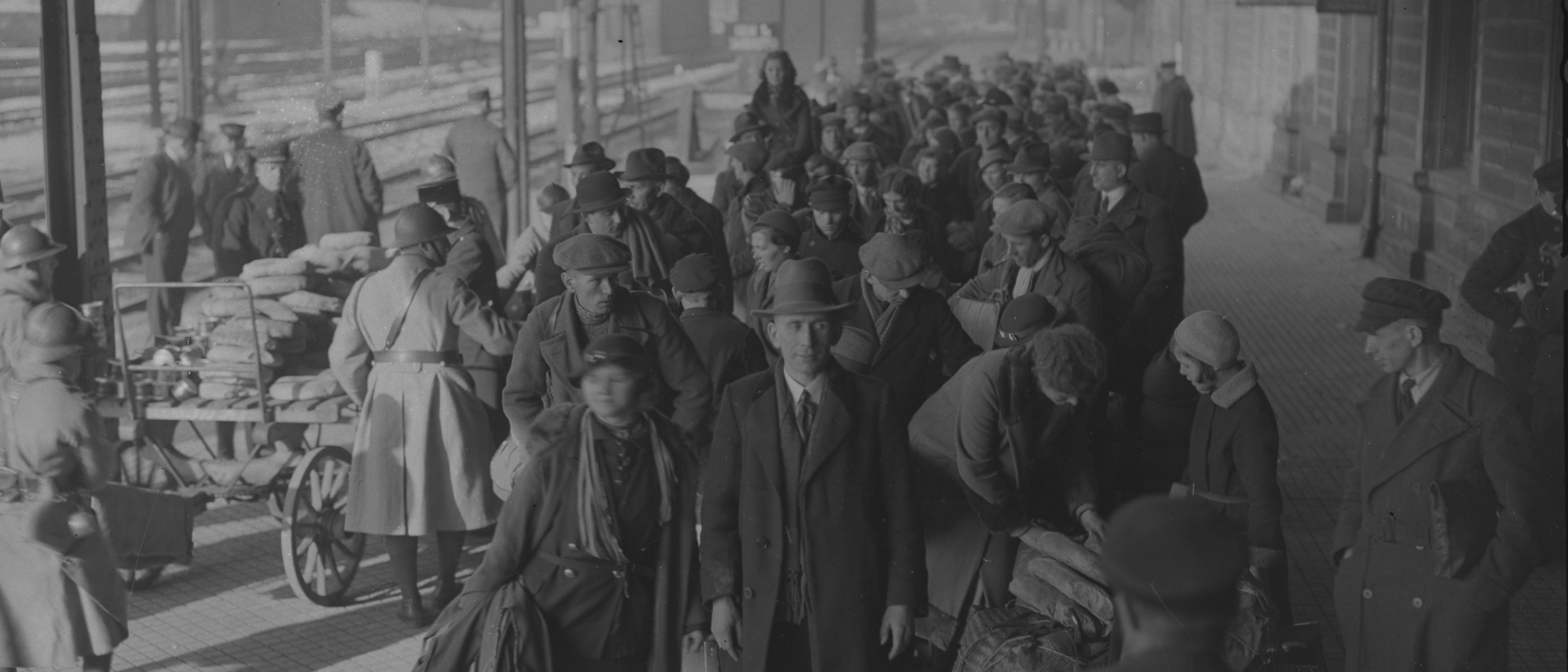Foreword
This Jewish book of remembrance is in memory of the Jews who lived in Saarbrücken and Saarland. It provides information about their history and importance in our society and the suffering inflicted upon them. The book is a personal memorial to the victims of the Holocaust and provides comprehensive options for researching and finding out about further biographies, backgrounds and historic contexts. It also represents a commitment to an active culture of remembrance.
moreAt the centre of life and ahead of their time – From the end of the 19th century to the 1930s, Jews were at the centre of life and were very much ahead of their time in that they recognised and implemented innovations before others. The book also documents the Jews in Saarbrücken and illustrates what Germany has robbed itself of through the Holocaust. Jewish men and women played a significant part in the economic development of Saarbrücken from the end of the 19th century, enriching cultural life and working as doctors or lawyers. The vast majority were employed. It is all the more moving then that survivors of the Holocaust returned to us after 1945, founded another Jewish community in Saarbrücken and built the first synagogue here after the Second World War in 1951 during the era of Saarland in its semi-autonomous period of history.
A commitment never to forget – The book of remembrance is also considered to be an acknowledgement of the victims and their suffering. It is a commitment to never forget this suffering for all eternity. A name has special significance for the Jews. The Talmud states: “For at the beginning of life we give a name, and at the end of life a "good name" is all we take with us”. The Nazi dictatorship denied all Jewish people the right to life, wanted to erase their existence across the world and eradicate their memory from history and they did not stop at synagogues, graves, memorials or places of remembrance. The aim was to completely eradicate all Jewish biographies.
An educational opportunity – The book of remembrance with its database and contextual information provides schools, universities, local history researchers and all interested citizens with the possibility of researching Jewish life in relation to Saarland and Saarbrücken and to trace the history of their place and city. The book encompasses Jews who lived in Saarbrücken and Saarland, who stopped off here at some point in their lives and who made their mark here. The region covered is broad. The Saar region of the League of Nations (1920-1935) is not the same as Saarland as we know it today (as of 1957). Back then, parts of the district of Merzig-Wadern formed part of the Trier-Saarburg district and parts of St. Wendel, along with Sötern and Bosen, belonged to the district of Birkenfeld. A fairly significant number of Jews also lived in the Saar region for just a short time. These individuals have also been documented because it cannot be ruled out that including them may later reveal connections with other Jewish people living in Saarland.
An ongoing process – The book of remembrance is considered to be an ongoing process. It is not a finished project but rather a linear and developing project. This reflects a commitment to and obligation of lasting remembrance. It also enhances the role of the book of remembrance as a tool for historical and political education work. More information becomes accessible year after year because personal data for individuals is only displayed once the Saarland Archive Law period of protection has expired. The database aims to enable sourced-based research in line with current levels of knowledge. Newly acquired information, necessary corrections, additions and information from users and any new research results will be constantly incorporated into the extensive body of contextual information over the upcoming years. Documenting the victims in this way presents an enormous challenge. Jews have been documented both by the German administration and by the administration of other countries to which they fled. This has led to differing or incorrect spellings including Eastern European surnames and gallicised names. This may lead to mistakes and duplicate entries which should be avoided.
Use of the book of remembrance and contextual information – The database enables searches to be undertaken by name and location. It is based on accessible sources from the Saarland State Archive, holdings of the State Compensation Office, various holdings of the Saarbrücken City Archive and a range of databases accessible online. The City Archive has conflated this information.
A project and its history – The City Archive undertook extensive research as part of its compilation of the memorial to the murdered Jews from Saarland which stands outside of the synagogue in Saarbrücken. This formed the basis for the book of remembrance and the extensive body of information being developed by the City Archive. It was only possible to implement this project thanks to generous funding as part of the project “WissensWandel. Digitalprogramm für Bibliotheken und Archive innerhalb von NEUSTART KULTUR” (Knowledge Shift. Digital Programme for Libraries and Archives Within NEUSTART KULTUR), a programme by the Federal Commissioner for Culture and Media. We would like to express our heartfelt thanks.
Uwe Conradt – Mayor of the City of Saarbrücken
To the memorial book and further search options
The municipal archives of the state capital researched and collected the data of the victims to the best of their knowledge and awareness. Within the framework of the project, more than 20,000 records of Saarland origin could be collected and partially linked. If you have any additional information about entries in the database, please let us know and help to make the database even more relevant.

